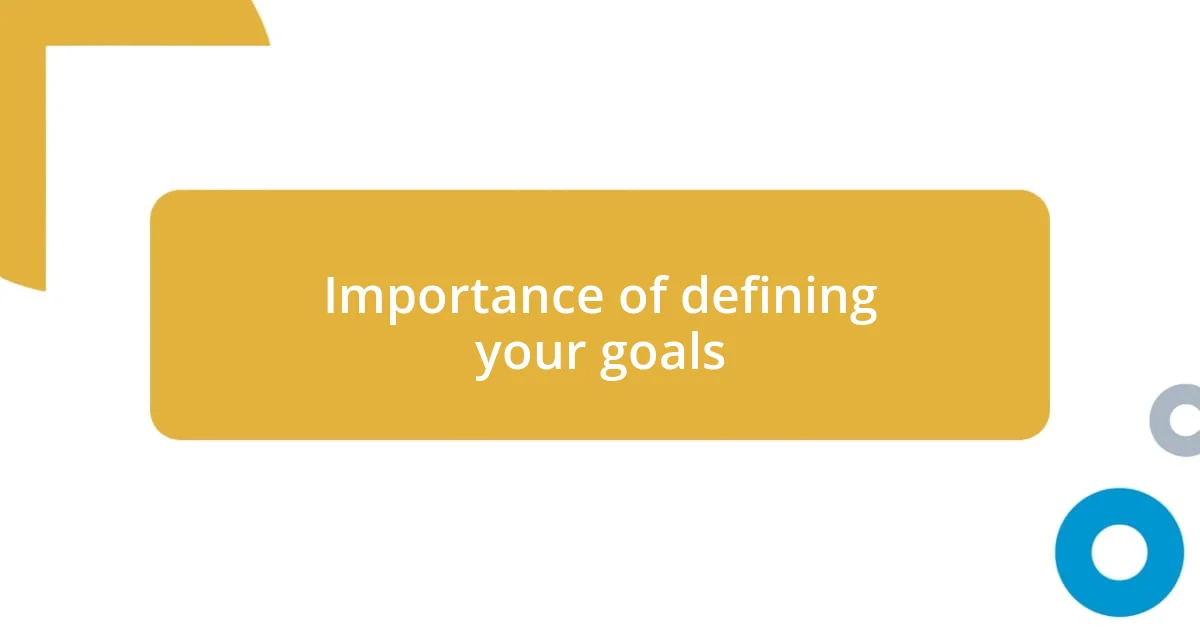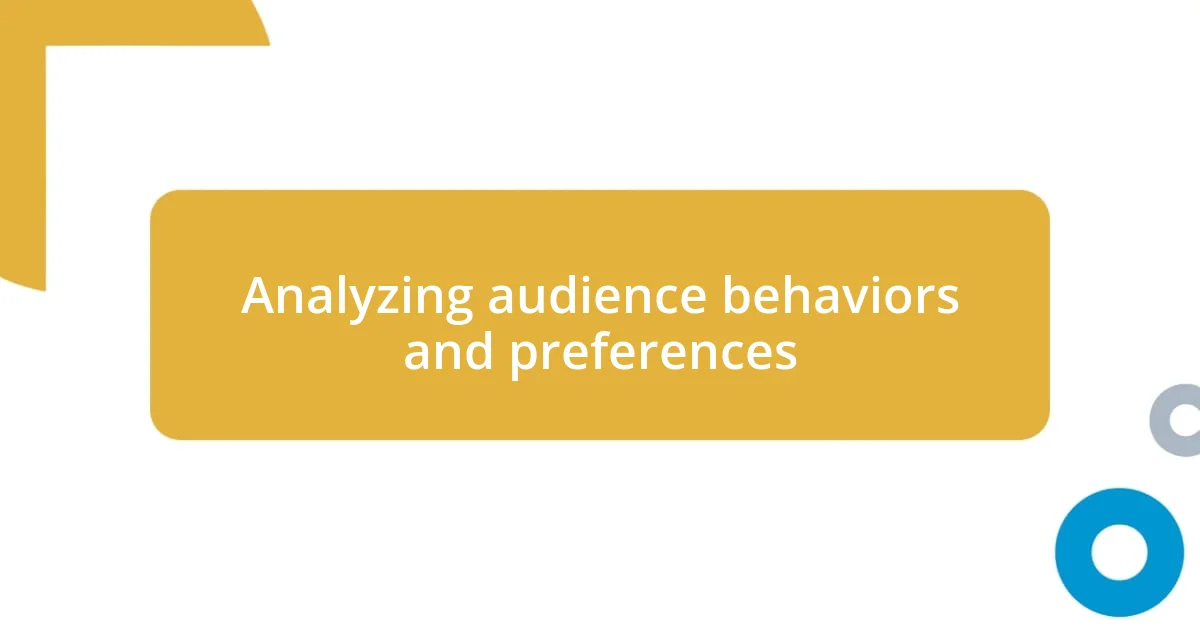Key takeaways:
- Content marketing funnels guide potential customers from brand awareness to purchase, with each content piece serving to build trust and address specific needs.
- Defining clear goals before creating content enhances clarity, measurability, alignment with business objectives, and audience understanding, leading to more impactful engagement.
- Analyzing audience behaviors and preferences through segmentation and feedback is essential for optimizing content strategy, while measuring success via key performance indicators (KPIs) informs ongoing improvements.

Understanding content marketing funnels
Content marketing funnels are essentially the journey a potential customer takes from discovering your brand to making a purchase. I remember when I first dived into this concept; it felt like finding a roadmap that guided me through the intricate paths of customer engagement. It’s fascinating how every piece of content serves a specific purpose in gently nudging a visitor closer to the end goal, isn’t it?
At the top, people may casually interact with blog posts or social media updates, unaware of what’s to come. I still recall a time when a simple infographic I shared on social media ignited a conversation that led to a new client. That moment reinforced my understanding of how even the most minor engagement can stir curiosity and pull someone deeper into the funnel.
As you move downward in the funnel, content becomes more targeted, addressing specific pain points and needs. When I created a detailed eBook offering solutions to a common problem in my industry, I noticed a significant increase in leads. This shift reminded me of how content marketing funnels aren’t just about selling; they’re about building trust and establishing authority. What kind of trust-building strategies do you find most effective?

Importance of defining your goals
Defining your goals is the foundation of a successful content marketing funnel. When I first set out on this journey, I made the mistake of creating content without a clear aim. It wasn’t until I established specific objectives—like boosting brand awareness or generating leads—that I noticed a meaningful shift in my engagement metrics. Having well-defined goals focused my efforts, making it easier to create impactful content that resonates with my audience.
Here’s why you should prioritize goal-setting before diving into your content marketing strategy:
- Clarity: Clear goals eliminate confusion and lay out the path for your content creation.
- Measurability: Specific targets help you evaluate your success and adapt strategies based on performance.
- Alignment: Well-defined objectives align your content with your broader business goals, ensuring every piece serves a purpose.
- Audience Understanding: Knowing what you want to achieve allows you to tailor your content to better meet your target audience’s needs.
When I finally understood this, my content became a much more powerful tool for engagement and conversion.

Analyzing audience behaviors and preferences
Analyzing audience behaviors and preferences is a crucial step in optimizing your content marketing funnel. I vividly recall the moment I started tracking my audience’s online interactions. By using analytics tools, I could see which blog posts were generating the most traffic and what topics resonated most with readers. This data was illuminating, revealing preferences I hadn’t anticipated and allowing me to pivot my strategy to better serve my audience’s interests.
As I delved deeper, I discovered the importance of segmentation. This means grouping your audience based on their behavior, demographics, or preferences. For instance, I found that my email campaigns performed significantly better when I tailored messages to specific segments, like first-time visitors versus returning customers. It was a game-changer, transforming generic content into personalized messages that spoke directly to each group’s needs and desires.
In my experience, asking the right questions can lead to profound insights. I started conducting surveys to gauge audience preferences directly. The feedback was invaluable. I remember one particular survey that revealed a strong interest in video content. Switching gears to incorporate more videos not only boosted engagement but also created a genuine connection with my audience. Understanding your audience is not just beneficial; it’s essential for effective content marketing.
| Audience Behavior | Content Strategy |
|---|---|
| High Engagement | Create more of that content type |
| Low Engagement | Modify or phase out |
| Time on Page | Enhance information and visuals |
| Feedback Types | Adjust future content accordingly |

Measuring success of your funnel
When it comes to measuring the success of your content marketing funnel, I’ve found that tracking key performance indicators (KPIs) is vital. Initially, I struggled with identifying which metrics mattered most. It wasn’t until I focused on specific KPIs, like conversion rates and customer acquisition costs, that I could truly gauge my funnel’s effectiveness. Have you ever felt lost in a sea of data? It can be overwhelming, but honing in on the right metrics transformed how I approached my content strategy.
Analyzing these KPIs isn’t just about numbers; it tells a story about your audience’s journey. For instance, after implementing a more robust tracking system, I was astounded to discover that a majority of my leads were dropping off at a particular stage in the funnel. This insight prompted me to revisit that part of my content and refine it to address potential pain points. It was a revelation—realizing that sometimes the smallest tweaks can lead to significant improvements.
Another critical aspect I’ve learned is the importance of A/B testing within the funnel. The first time I experimented with different headlines for my email campaigns, the results stunned me. One subject line outperformed the other by over 30%. This experience solidified my belief that testing is not just an option; it’s essential for ongoing improvement. Don’t you find it fascinating how even minor adjustments can dramatically enhance engagement? Thus, measuring success is not merely an endpoint but an ongoing process of evolution and adaptation.














